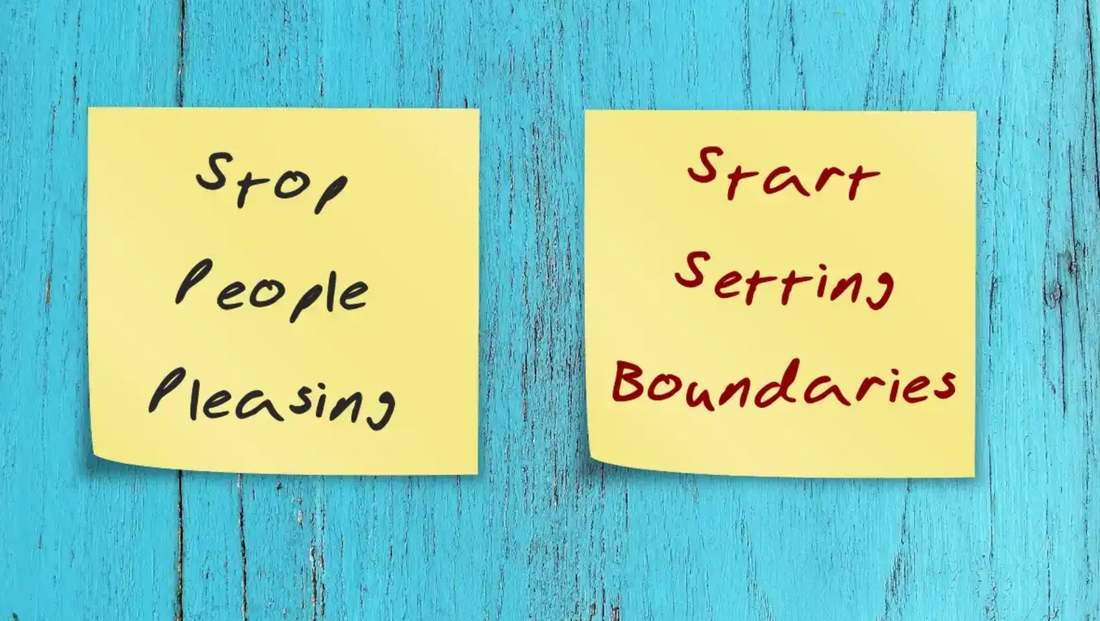
How to Stop People-Pleasing and Start Prioritising Yourself
💬 “I just don’t want to let anyone down…”
Sound familiar?
Whether it’s saying yes when you mean no, putting your own needs last, or staying silent to keep the peace—people-pleasing is a habit many women carry. It often starts in childhood, gets reinforced in relationships, and continues silently in adulthood—at the cost of your energy, identity, and mental health.
But here’s the truth:
You don’t have to sacrifice yourself to be kind, generous, or liked.
You can honour others and honour yourself.
Let’s talk about how to stop people-pleasing—and start prioritising you.

What Is People-Pleasing (Really)?
People-pleasing is when you consistently put other people’s needs, emotions, or expectations above your own—even when it harms your wellbeing.
It’s often rooted in:
-
Fear of rejection or conflict
-
A need for validation
-
A belief that your worth is tied to being helpful or agreeable
-
A desire to feel safe, needed, or appreciated
But over time, it leads to:
-
Resentment
-
Exhaustion
-
Anxiety
-
Identity loss (“Who even am I?”)
The Mindset Shift: You’re Allowed to Be Seen, Heard, and Unavailable
The first step to change? Acknowledge this:
You are allowed to disappoint others and still be a good person.
You are allowed to take up space.
You are allowed to say no, change your mind, and prioritise your wellbeing.
This isn’t selfish. It’s self-respect.
5 Tools to Stop People-Pleasing and Start Prioritising Yourself
1. Get Clear on Your Core Values
If you don’t know what matters to you, you’ll default to what matters to everyone else.
💬 Try this prompt:
“What is most important to me right now in my life, and what boundaries protect that?”
2. Pause Before You Say Yes
When someone asks for something, don’t answer straight away. Practice saying:
💬 “Let me check my schedule and get back to you.”
💬 “I’ll need a little time to think about that.”
This gives you space to respond—rather than automatically react.
3. Practice Low-Stakes Boundaries First
You don’t need to start with a dramatic confrontation. Try boundaries in small, safe ways:
💬 “Actually, I can’t make that dinner—but let’s catch up next week.”
💬 “I’m turning off my phone at 8pm to get some rest.”
Small reps build boundary-setting confidence.
4. Rewrite the Guilt Story
Guilt will show up—expect it. But guilt doesn’t mean you’re doing something wrong. It means you’re doing something new.
💭 Ask yourself:
“Am I feeling guilty because I crossed a value—or because I’ve crossed someone else’s expectations?”
5. Create an ‘Energy Budget’
Each week, write down:
-
What drained me?
-
What energised me?
-
What will I say no to next week to protect my energy?
Your time and energy are currency. Spend wisely.

3 Simple Boundary Scripts for Real-Life Moments
📍 When someone asks for too much:
“Thanks for thinking of me! I’m at capacity this week so I can’t take anything else on.”
📍 When a friend always vents but never listens:
“I really value our friendship—and I’d love to have a more balanced space for both of us to share.”
📍 When you want to end a call or visit:
“This has been lovely. I need to head off now to recharge and get a few things done.”
The Truth About Prioritising Yourself
You don’t need to earn rest.
You don’t need to apologise for your limits.
You don’t need to please everyone to be worthy of love and respect.
The right people will understand and support you as you grow into your boundaries. And the people who don’t? They may have been benefiting from the unboundaried version of you.
But the more you practise, the more you’ll:
-
Feel peace instead of resentment
-
Connect authentically instead of performatively
-
Reclaim your energy, voice, and self-worth
Ready to Practice?
Start by choosing one small boundary today. Write it down. Say it out loud. Back yourself.
You’re allowed to take care of others—as long as you’re not abandoning yourself in the process.

